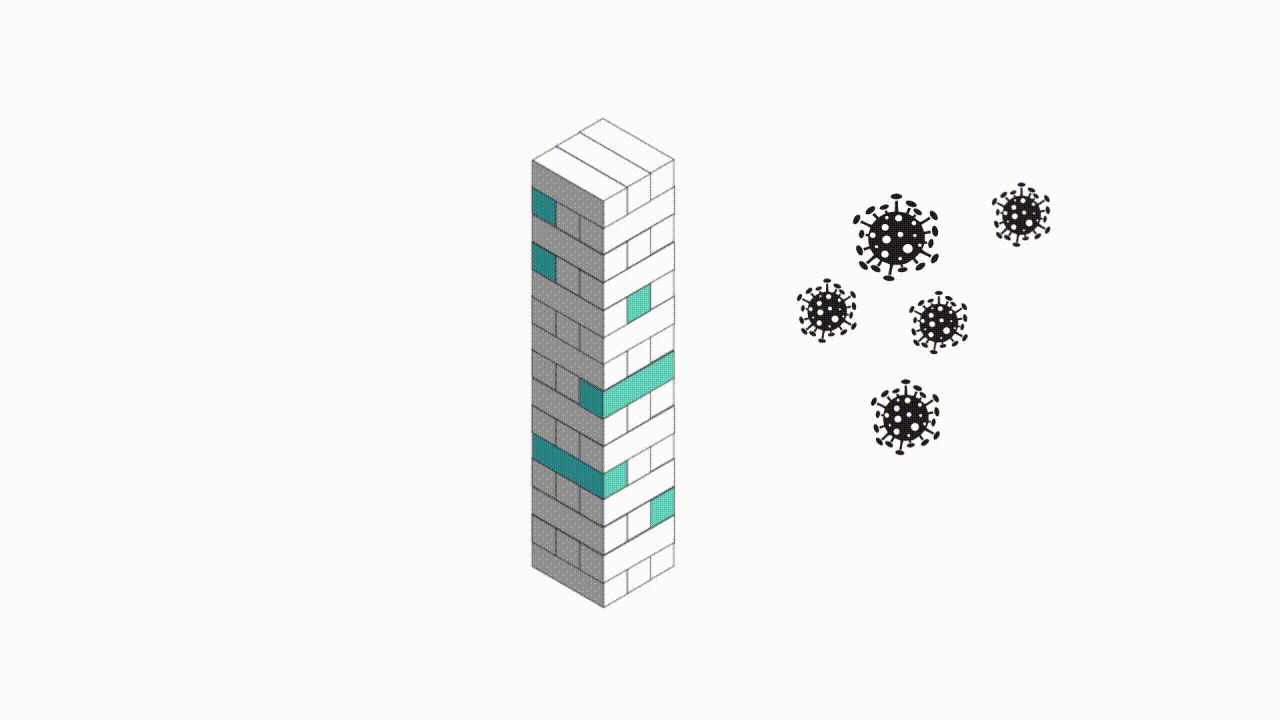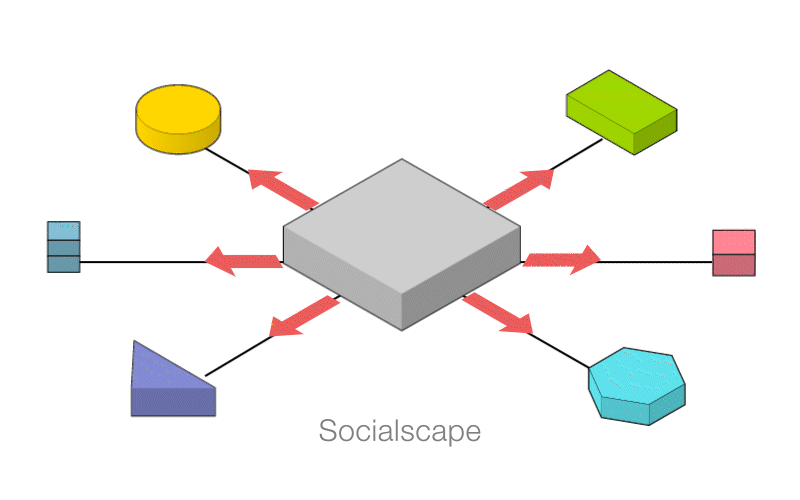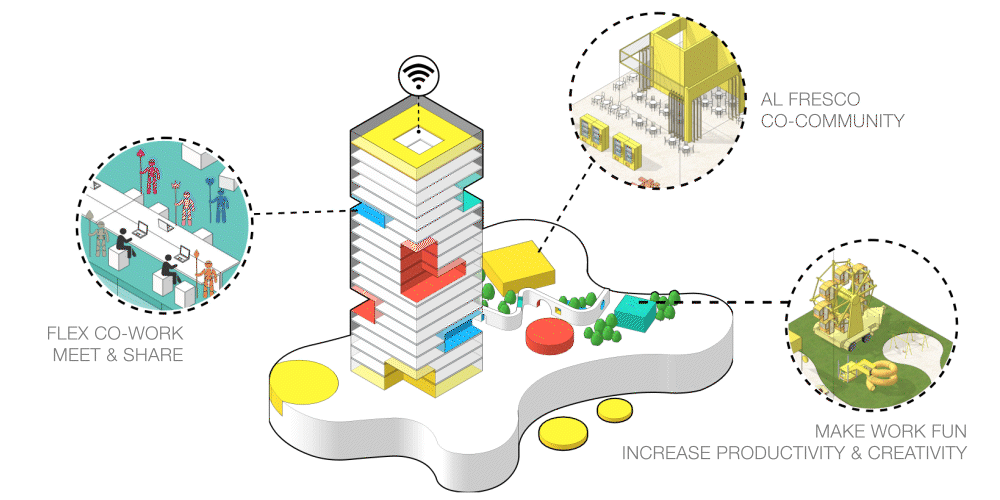At Benoy, we’ve been assimilating a range of data and information to explore new design models for workspaces, places and scenarios. This project, which we call Love/Work, has involved exploring the concept of ‘worktribes’ to help us conceive designs that respond to the needs and wishes of different employees. So, for example, we’ve been looking at the workplace profiles and proclivities of ‘Bosses’ (fine diners, investors, Boomers); ‘Digital Nomads’ (vloggers, gamers, Gen Ys); and ‘Boh-Hommes’ (café hoppers, joggers, Gen Zs), among others.
We’ve also devised a range of ‘workscape’ models to accommodate different configurations of remote and office working. For example, the ‘Monoscape’, a conventional model whereby a company occupies a floor in an office tower, often in a central business district, with all employees working from one fixed destination. Then there’s the ‘e‑Scape’, which is a work-from-home-plus-HQ model, with employees working both remotely and from a central office location. Or the ‘Socialscape’, which is a ‘co-community’ bringing several businesses and sectors together in one common place, with shared resources, amenities and facilities.
The ‘Performancescape’, meanwhile, is based on a flex-and-core scenario. Here, a landlord allows a company to rent space on a long-term basis for their core operations, with an additional flexible workspace to accommodate changing staff and business needs. And finally, the ‘Miniscape’, a hub-and-spoke model where a company retains a central hub but redistributes a percentage of its workspace across several satellite offices.







